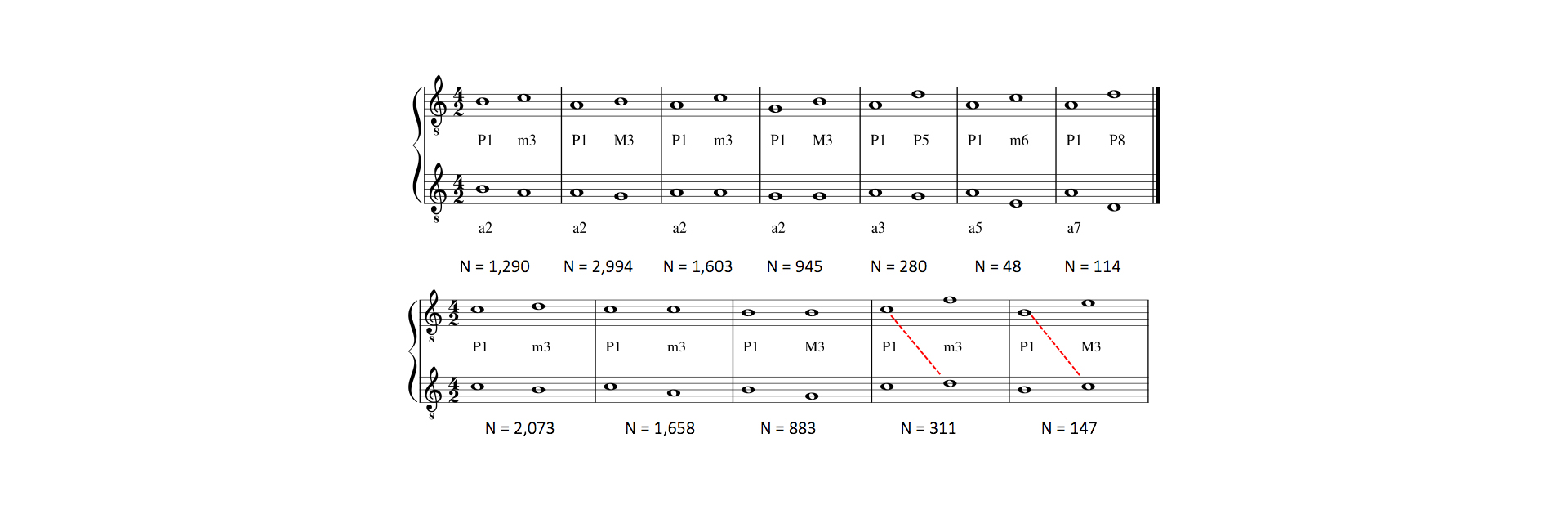
Theory vs. Practice
As musicians and scientists, we seek to provide empirical support (or refutation) for claims and common assumptions concerning the structural organization of music. These questions are typically carried out by performing statistical modeling on a corpus (or collection) of musical data. Some recent questions have included: Did Renaissance composers write counterpoint in a way that is consistent with how their contemporaries taught it? Are popular music melodies harmonized in a different way than classical melodies? How are note-transition probabilities affected by the particular harmony that underlies them?
Publications
- Arthur, C., Schubert, P., & Cumming, J. (2018). "The Role of Structural Tones in Establishing Mode in Renaissance Counterpoint," in Proceedings of the 15th International Conference for Music Perception and Cognition (Montreal, Canada).
- Arthur, C. (2017). "Taking Harmony into Account: The Effect of Harmony on Melodic Probability," Music Perception, 34(4): 405–423
- Arthur, C. (2016). "A Corpus Approach to the Classification of Non-chord Tones Across Genres," in Proceedings of the 14th International Conference for Music Perception and Cognition (San Francisco, CA, USA): 74–76